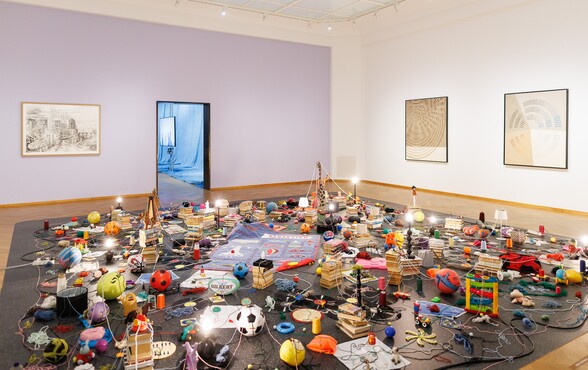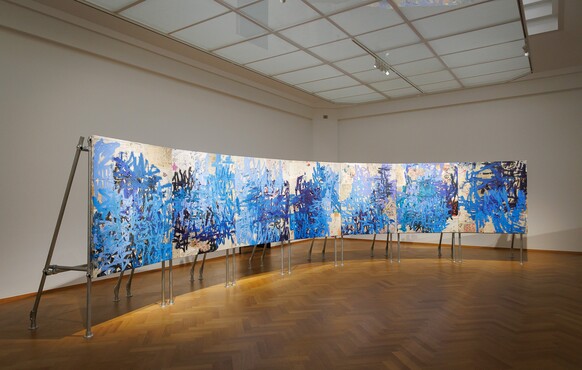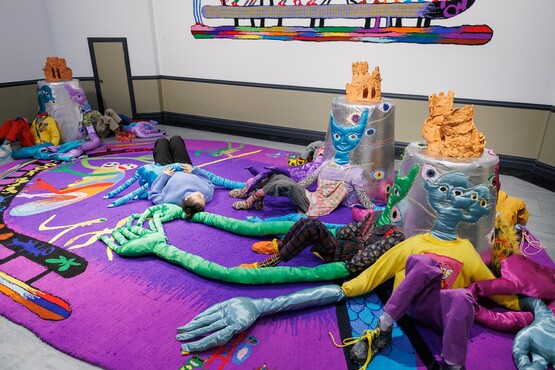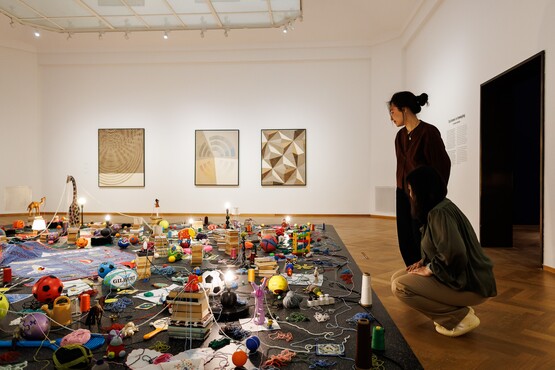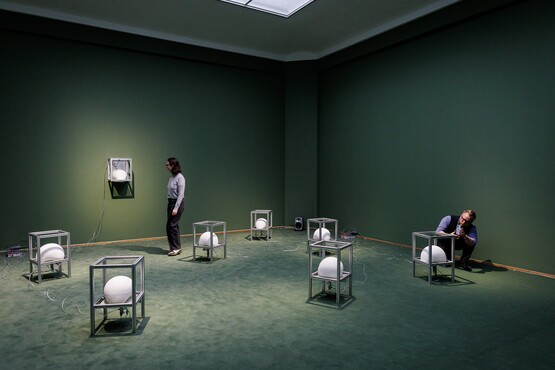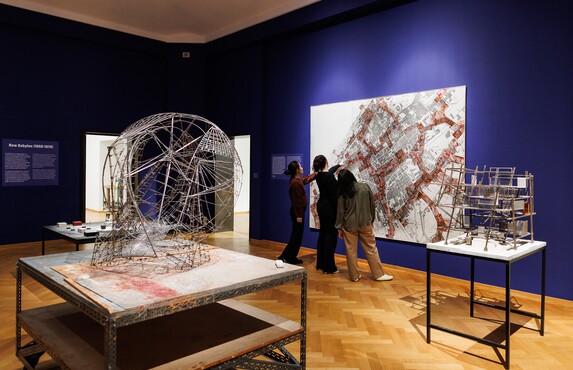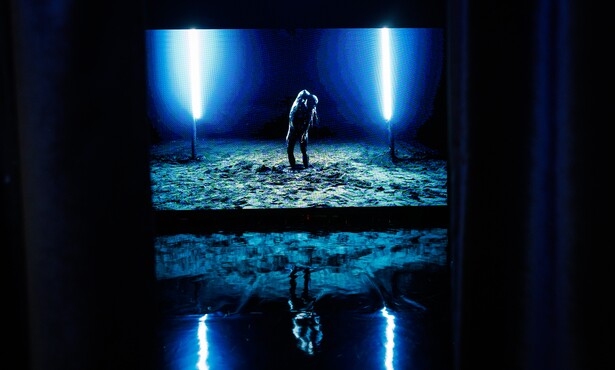Ontdek de collectie
Kunstmuseum Den Haag has a treasure chamber of over 160.000 pieces of art. Here we work on making the highlights from this collection available online.
New New Babylon
Visions for Another Tomorrow
Imagining the future means looking beyond the horizon. Where are we now and where do we want to be? With New New Babylon, the Kunstmuseum Den Haag creates room for new perspectives. Are grandiose visions still relevant today? From a place of solidarity and care, makers envision the future in a different light.
Breathing and pulsing devices that can replace the human brain, a sea of children’s drawings that connects continents, and greenhouses built on container ships. In New New Babylon: Visions for Another Tomorrow, leading and emerging visual artists, designers, thinkers and activists from around the world share their perspectives. The starting point is a key work in the museum’s collection, the visionary project New Babylon (1956-74) in which Constant Nieuwenhuys conceived a society for optimum creativity and the freedom to play. Today’s makers show that his quest is far from over. New New Babylon: Visions for Another Tomorrow shows the power, the beauty and the necessity of radical thought.
New New Babylon features works by
Afra Eisma, Ambassade van de Noordzee, Carlijn Kingma, Davide Allieri, David Jablonowski, Edwin Zwakman, Emma Talbot, Frank Ammerlaan, Gayil Nalls, Harrison Pearce, Hella Jongerius, Jonas Staal, Joshua Serafin, Kinke Kooi, Moshekwa Langa, Oscar Murillo, Pelumi Adejumo, Randa Mirza, Sadik Kwaish Alfraji, Sally von Rosen, Sam Samiee, Steffani Jemison, Tai Shani, The Otolith Group, Werker Collective and Yamuna Forzani & Céline Hurka.
This exhibition is made possible with support from Mondriaan Fund.
In search of in-depth reading?
-
In this longread, professor Judi Mesman explores the power of art and science in our rapidly changing world. oth areas are essentially about imagination, about creativity and experimentation in as yet unknown territory, which creates new insights, visions of a more beautiful and better world, and sometimes even the revolution. Seen in this way, the two professions should be natural allies in the pursuit of a just society. Yet the promising 'triangle' of art, science and society is far from self-evident.
-
In this essay, Zippora Elders - guest curator of New New Babylon - undertakes a playful tour of Constant's oeuvre to explore how his work can encourage more artistic rebellion and imagination beyond the status quo.
-
Joke de Wolf laat in deze longread zien hoe ‘Babylon’ in brede zin — van Bijbelse stad tot winkelcentrum — raakt aan Constants utopische visie en zet daar hedendaagse artistieke perspectieven op kolonialisme, identiteit en verbeelding tegenover. New New Babylon als een mozaïek van toekomstbeelden waarin kunstenaars hun zorgen én hun hoop vormgeven - en hoe dat van alle tijden is.


